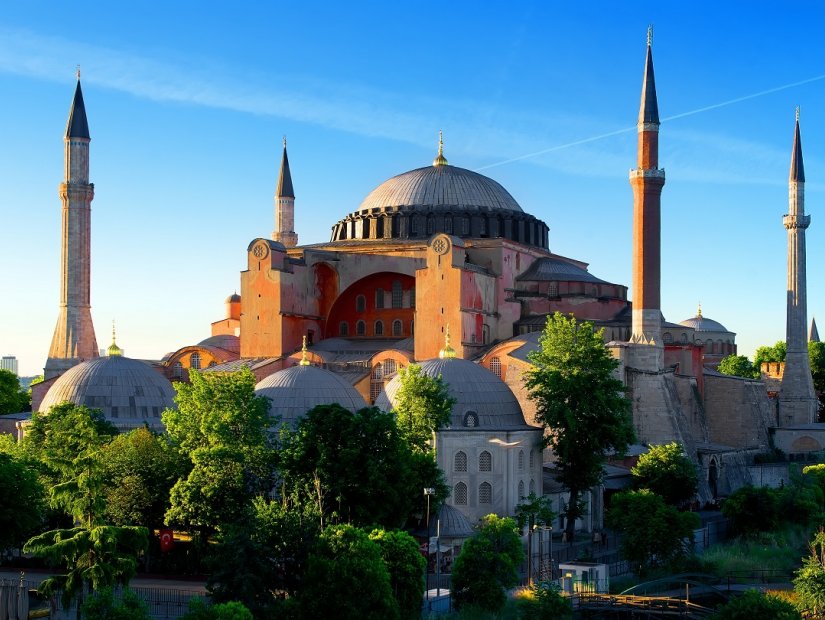Blog
About Hagia Sophia
About Hagia Sophia
About Hagia Sophia
Hagia Sophia is among the most important structures in the history of architecture that have survived until today. Hagia Sophia served Christianity as a church for 916 years and Muslims as a mosque for 481 years.
Hagia Sophia is a must-see work not only with its magnificent architecture but also with the best examples of Byzantine mosaic art. Justinian, who ruled in some of the brightest periods of the Byzantine Empire, asked for a structure to surpass the legendary Solomon’s Temple, which was famous for its gigantic size, and the result was the Hagia Sophia.
This magnificent work was called Megale Ekklesia when it was first built. After the conquest, it became known as Hagia Sophia. Hagia Sophia is the largest church built by the Eastern Roman Empire in Istanbul. Hagia Sophia has remained the most monumental structure in the world for centuries with its size and splendor. It has also endured many disasters such as fire and earthquakes in Istanbul. Hagia Sophia was built three times in the same place.
Emperor Constantius built the first church in 360. The first building, which was covered with a wooden roof, was burned down as a result of the uprising in 404 due to the disputes between Empress Eudoksia, the wife of Emperor Arcadius, and the Patriarch of Istanbul Ioannes Chrysostomos. Today, the mosaic depiction of the patriarch can be seen on the north tympanum wall of Hagia Sophia. Although there are no remains of the first church today, it is thought that the bricks with the Megale Ekklesia stamp found in the museum warehouse belong to this building.
Emperor Theodosios II rebuilt the second church in 415. This building is known to have a basilical plan with five naves, covered with a wooden roof and a monumental entrance. The church was destroyed on 13 January 532, during the great public uprising, which occurred as a result of the unification of the blues representing the aristocratic section and the greens representing the artisans and merchants against the Empire.

The idea of today’s Hagia Sophia emerged when Justinian saw in a dream that someone wanted him to build a unique temple in the world and to spend all his property for his religion. Thereupon, the construction of the church was started by Justinian in January 532. Its architects are Anthemios from Tralles (Aydin) and Isidore from Miletus. Its construction lasted 5 years and 10 months and was completed on 27 December 537.
According to the legend, the architect of the Hagia Sophia Church disappeared when it came time to knit the dome, which was the final stage of construction. All cities were searched, but the architect couldn’t be found. Rewards were promised to those who find it. Then Constantine gathered all the architects in the country and wanted the dome to be knitted. However, no architect would dare to do so. The building remained unfinished for 18 years.
The architect of Hagia Sophia, who appeared 18 years later, was brought before Constantine and asked why he escaped. The architect said that he did not run away but that so much time had to pass for the building to settle down, and if the time did not pass, the building would be demolished when the dome was built. Afterward, he went to Hagia Sophia construction and proved that the building settled down about 3 meters.
The church was converted into a mosque after the conquest of Istanbul. All Ottoman sultans carefully preserved Hagia Sophia Mosque, and many additions and repairs were made to the building. The most extensive and costly of these repairs were made during the reign of Abdülmecid. Hagia Sophia Mosque was turned into a museum in 1934, 11 years after the proclamation of the Republic. On 2 July 2020, Hagia Sophia was opened to worship with the Council of State’s decision and started to be used as a mosque again. After this decision, the first Friday prayer was made on 24 July 2020.


